#Juan Pablo De Miguel
Text
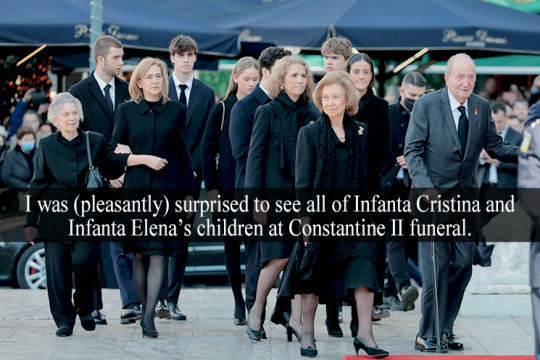
“I was (pleasantly) surprised to see all of Infanta Christina and Infanta Elena’s children at Constantine II funeral” - Submitted by Anonymous
#felipe de marichalar y borbon#victoria de marichalar y borbon#Pablo Urdangarin#juan urdangarin#Irene Urdangarin#Miguel Urdangarin
25 notes
·
View notes
Text







The Spanish Royal Family attends the funeral service for King Constantine II at the Athens Metropolitan Cathedral | January 16th, 2023
#srf#king constantine iis funeral#juan urdangarin#pablo urdangarin#miguel urdangarin#irene urdangarin#princess irene#felipe de marichalar#victoria de Marichalar
26 notes
·
View notes
Text

6 August 2011 | Inaki Urdangarin, Miguel Urdangarin, Pablo Urdangarin, Felipe de Marichalar, Juan Urdangarin, Maria Zurita, Infanta Elena and Victoria de Marichalar of Spanish Royal Family on board "Somni" during the 30th Copa del Rey Audi Mapfre Sailing Cup day 6 in Palma de Mallorca, Spain. (c) Carlos Alvarez/Getty Images
#Inaki Urdangarin#Miguel Urdangarin#Pablo Urdangarin#Felipe de Marichalar#Juan Urdangarin#Victoria de Marichalar#Spain#2011#Carlos Alvarez#Getty Images
2 notes
·
View notes
Text
Cada minuto, cada segundo, el tiempo lo tenemos contado… “La Hora Marcada”
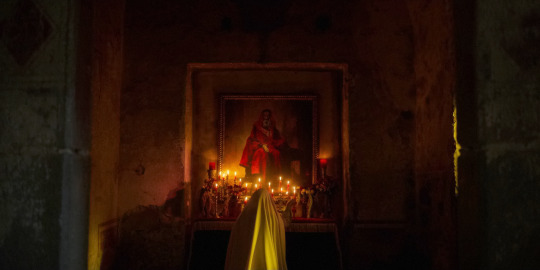
Los creativos de esta antología tomaron como base algunos de los guiones del clásico homónimo de 1988 para presentar a la audiencia una versión contemporánea con la esencia del programa original, creando así un universo visualmente único para cada capítulo.
La temporada estará compuesta por nueve historias independientes y una colección de personajes que se enfrentarán a criaturas sobrenaturales, monstruos temibles, animales míticos y leyendas urbanas.
Estreno: 27 de octubre de 2023 en ViX.
youtube
Producida por Patricio Wills y Carlos Bardasano de W Studios, la serie cuenta con las actuaciones de Angélica Aragón, Dario Yazbek Bernal, Ana Layevska, Agustín Hernández Zurita, Cassandra Sánchez Navarro, Miguel Pizarro, Mariana Torres, Harold Torres, Alejandra Ambrosi, Juan Pablo de Santiago, Mercedes Hernández, entre otros.

#La Hora Marcada#Angélica Aragón#Dario Yazbek Bernal#Ana Layevska#Agustín Hernández Zurita#Cassandra Sánchez Navarro#Miguel Pizarro#Mariana Torres#Harold Torres#Alejandra Ambrosi#Juan Pablo de Santiago#Mercedes Hernández#Series#ViX
1 note
·
View note
Text
"En la creación de público tendrían que implicarse más los conservatorios"
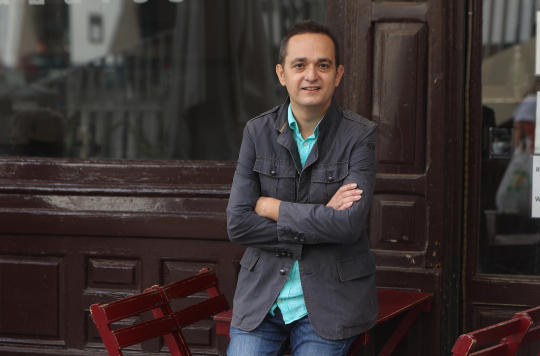
[Francisco Bernier (Sevilla, 1975) esta misma semana en el centro de la ciudad. / JOSÉ ÁNGEL GARCÍA]
Un concierto de Cañizares y el Cuarteto de Guitarras de Andalucía abre mañana la XIII edición de un Festival que es el empeño personal de este guitarrista sevillano
Anda que no para, remontando algunos problemas de salud y dando los últimos retoques a la decimotercera edición de su creación personal, la del Festival de la Guitarra de Sevilla, que Francisco Bernier ha querido poner este año bajo la divisa de la paz. “He tenido el honor de tocar varias veces con la Orquesta Filarmónica de Ucrania y eso me ha hecho crear vínculos de amistad y respeto, artísticos y personales, con el país. Tras la invasión de Rusia, pensé que había que hacer algo, y de hecho traemos este año a un guitarrista ucraniano [Roman Viazovskiy], nacido en el Donetsk, la parte que acaba de apropiarse Rusia”.
–Abre Cañizares, un flamenco singular, junto a su propio cuarteto, el Cuarteto de Guitarras de Andalucía.
–Exacto, y hacemos una cosa original, compaginando guitarra clásica con flamenca. La idea fue suya. Coincidimos en el Festival de Córdoba, él tocaba su Concierto Mozárabe para guitarra y orquesta y nosotros el Concierto Andaluz de Rodrigo, y nos dijo que teníamos que hacer algo juntos, y lo que hizo fue adaptar su concierto para quinteto, pues aunque él figure como solista, en el fondo su arreglo es un quinteto.
–Al programar esta inauguración, ¿conocía el ciclo de La guitarra desnuda que la Bienal ha hecho en el Espacio Turina?
–No, pero me agrada mucho. El Festival apostó ya por ese formato de guitarra flamenca solista, que no es muy habitual en el mundo flamenco, en el que la guitarra se concibe mucho más para los acompañamientos.
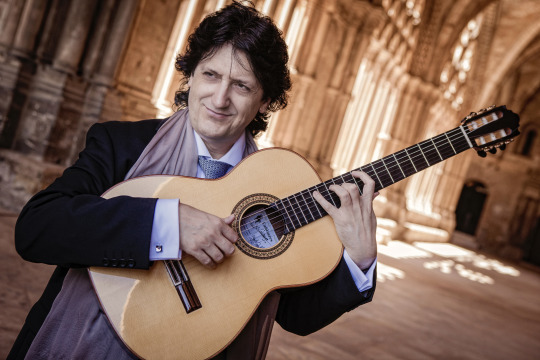
[Juan Manuel Cañizares abre el próximo jueves 6 de octubre el XIII Festival de la Guitarra de Sevilla. / AMANCIO GUILLÉN]
–Contando la apertura, hacen tres conciertos flamencos…
–Eso es, porque tenemos al cantaor Rafael de Utrera acompañado por Pepe Fernández, un guitarrista muy joven, y en la clausura a Juan Carlos Romero, acompañado por Rafael Campallo, no bailando en este caso, sino usando su cuerpo como un gran instrumento de percusión.
–¿Qué ha pasado con el concurso de guitarra flamenca?
–Este año no lo hacemos. Lo montamos aconsejados por un especialista, pero la guitarra flamenca como solista ya le he dicho que no es fácil, así que tenemos que darle una vuelta, porque yo quiero recuperarlo, aunque sea desde otra óptica.
–Se mantienen los otros dos concursos, ya presencial el de Guitarra Clásica supongo…
–En efecto. Mantenemos el Concurso de Guitarra Clásica y el de Composición Manuel de Falla. La previa del Concurso de Guitarra ha sido online, pero semifinales y final son presenciales. Tiene que ser así. No puede juzgarse en igualdad de otra forma: uno en casa puede tener mejor o peor equipo de grabación, grabarse diez veces, si lo necesita. El interés del concurso es que tiene que tocar ahí, en la escena, una vez.
–¿Cuántos conciertos ofertan este año?
–Dieciocho.
–¿En cuántos espacios?
–El Espacio Turina es el principal, pero vamos también este año a la Capilla del Palacio Gótico del Alcázar. Serán dos conciertos gratuitos los domingos a mediodía. También estaremos en el Antiquarium y en la Sala de las Pinturas del Espacio Santa Clara, donde hacemos el Festival Off, en el que presentamos a jóvenes que tienen muy buen potencial.
–Mantienen el formato de conciertos dobles…
–Sí, es que si no, nos quedaríamos sin fechas. La otra opción sería reducir la programación, así que esa me parece una buena solución.
–¿Algún artista se ha quejado?
–No. Nunca. Les parece bien. Ya saben que sus conciertos son de unos 50 minutos más o menos. Y yo creo que salvo para el espectador que esté muy interesado en algo muy concreto, ofrecer al público dos espectáculos distintos, con diferentes artistas y programas es enriquecedor.
–Este año no hay concierto orquestal, pero viene otro cuarteto de guitarras...
–Sí, el Cuarteto de Guitarras de Split. Justo antes, Pablo Márquez hace un recital en torno a la folía, y luego viene este cuarteto a tocar música de compositores croatas, prácticamente desconocidos. Me interesan esos contrastes.

[Francisco Bernier en las setas, junto a dos de las sedes del Festival de este año. / JOSÉ ÁNGEL GARCÍA]
–¿Se plantea el festival abrirse más a los instrumentos antiguos?
–Hicimos una vez un concierto con Miguel Rincón y la OBS. Me encantaría repetir ese formato. Y por supuesto seguimos abiertos a ofrecer otro tipo de conciertos de instrumentos antiguos, y de hecho este año tenemos a José Luis Pastor, que repite variado su programa de la historia de la guitarra, con doce instrumentos diferentes, que hemos grabado para Contrastes. Pero a mí me da mucho respeto, porque en Sevilla tenemos un Festival de Música Antigua que es un referente nacional…
–¿Cómo andan de patrocinios?, ¿quién paga todo esto?
–El principal patrocinio es de los propios artistas. Lo que costaría su visita a precios reales no podríamos pagarlo. Por suerte, encontramos mucho interés por participar, lo que nos permite negociar precios asequibles para nuestros medios. Luego, tenemos el apoyo principal del ICAS a través de la contratación artística para el Turina y hemos pedido subvenciones a la Junta, que está por decidir, y al Ministerio, que ya la tenemos. Además conseguimos pequeños acuerdos privados que nos prestan ayuda, las cuerdas Savarez, la AIE [Artistas, Intérpretes o Ejecutantes], la Fundación SGAE, el Abba Sevilla Hotel, Manuel Murciano, que regala la guitarra al primer premio del concurso, o Leona Carbon Case, que regala también para el concurso un estuche muy peculiar, muy bonito.
–¿Alguna estrategia nueva para atraer público?
–Tenemos problemas de difusión. Operamos con la agencia Surnames, que hace un trabajo extraordinario dentro de las posibilidades, que son pequeñas. Necesitaríamos una apuesta mucho más importante en publicidad, pero eso es caro y nosotros no podemos asumirlo. A veces el ICAS nos ha ayudado en ese soporte publicitario. Lo he solicitado, pero me dicen que no está aprobado el plan de medios. Sería fundamental. No creo que no haya público para la guitarra, pero necesitamos llegar más a la gente. En cualquier caso creo que el del público para los conciertos es un problema generalizado hoy, y no sólo en Sevilla.
–¿Hace falta una apuesta más decidida por la formación de los espectadores?
–Sin duda. Hay que crear público nuevo, y en eso tendrían que implicarse mucho más los conservatorios. Si no se hace, el futuro va a ser complicado.
–El sello Contrastes sigue adelante pese a las dificultades.
–La venta de discos físicos es testimonial. Pero ofrecemos un material singular. Sacamos entre cuatro y seis discos anuales. Estamos a punto de hacer uno muy interesante con música de Sánchez Verdú, y John Griffiths volverá a publicar con nosotros un disco de vihuela, que estará esta vez dedicado a la Silva de sirenas de Valderrábano.
[Diario de Sevilla. 5-10-2022]
#francisco bernier#cañizares#cuarteto de guitarras de andalucía#cuarteto de guitarras de split#pablo márquez#miguel rincón#orquesta barroca de sevilla#joaquín rodrigo#josé maría sánchez verdí#john griffiths#enríquez de valderrábano#contrastes#josé luis pastor#rafael de utrera#pepe fernández#juan carlos romero#rafael campallo#roman viazovskiy#orquesta filarmónica de ucrania#música#music
0 notes
Photo

“Pyramid Nightmare” ~ Rockies, Alberta, Canada ~ Juan Pablo de Miguel
381 notes
·
View notes
Text
ENCONTRE UM AUTOR:
Envie sugestões.
Leia uma citação no modo aleatório.
Autores Desconhecidos
Adélia Prado
Adrian Tchaikovsky
Affonso Romano de Sant’anna
Alain de Botton
Albert Einstein
Aldous Huxley
Alexander Pushkin
Amanda Gorman
Anaïs Nin
Andy Warhol
Andy Wootea
Anna Quindlen
Anne Frank
Antoine de Saint-Exupéry
Aristóteles
Arnaldo Jabor
Arthur Schopenhauer
Augusto Cury
Ben Howard
Benjamin Alire Sáenz
Benjamin Rush
Bill Keane
Bob Dylan
Brigitte Nicole
C. JoyBell C.
C.S. Lewis
Carl Jung
Carlos Drummond de Andrade
Carlos Fuentes
Carol Ann Duffy
Carol Rifka Brunt
Carolina Maria de Jesus
Caroline Kennedy
Cassandra Clare
Cecelia Ahern
Cecília Meireles
Cesare Pavese
Charles Baudelaire
Charles Chaplin
Charlotte Nsingi
Cheryl Strayed
Clarice Lispector
Claude Debussy
Coco Chanel
Connor Franta
Coolleen Hoover
Cora Coralina
Czesław Miłosz
Dale Carnegie
David Hume
Deborah Levy
Djuna Barnes
Dmitri Shostakovich
Douglas Coupland
Dream Hampton
E. E. Cummings
E. Grin
E. Lockhart
EA Bucchianeri
Edith Wharton
Ekta Somera
Elbert Hubbard
Elizabeth Acevedo
Elizabeth Strout
Emile Coue
Emily Brontë
Ernest Hemingway
Esther Hicks
Faraaz Kazi
Farah Gabdon
Fernando Pessoa
Fiódor Dostoiévski
Florbela Espanca
Franz Kafka
Frédéric Chopin
Fredrik Backman
Friedrich Nietzsche
Galileu Galilei
Georg Wilhelm Friedrich Hegel
George Orwell
Hafiz
Hanif Abdurraqib
Helen Oyeyemi
Henry Miller
Henry Rollins
Hilda Hilst
Iain Thomas
Immanuel Kant
Jacki Joyner-Kersee
James Baldwin
James Patterson
Jane Austen
Jean Jacques Rousseau
Jean Rhys
Jean-Paul Sartre
Jeremy Hammond
JK Rowling
João Guimarães Rosa
Joe Brock
Johannes Brahms
John Banville
John C. Maxwell
John Green
John Wooden
Jojo Moyes
Jorge Amado
José Leite Lopes
Joy Harjo
Juan Ramón Jiménez
Juansen Dizon
Katrina Mayer
Kurt Cobain
L.J. Smith
L.M. Montgomery
Leo Tolstoy
Lisa Kleypas
Lord Byron
Lord Huron
Louise Glück
Lucille Clifton
Ludwig van Beethoven
Lya Luft
Machado de Assis
Maggi Myers
Mahmoud Darwish
Manila Luzon
Manuel Bandeira
Marcel Proust
Margaret Mead
Marina Abramović
Mario Quintana
Mark Yakich
Marla de Queiroz
Martha Medeiros
Martin Luther King
Mary Oliver
Mattia
Maya Angelou
Mehdi Akhavan-Sales
Melissa Cox
Michaela Chung
Miguel de Cervantes Saavedra
Mitch Albom
N.K. Jemisin
Neal Shusterman
Neil Gaiman
Nicholas Sparks
Nietzsche
Nikita Gill
Nora Roberts
Ocean Vuong
Osho
Pablo Neruda
Patrick Rothfuss
Patti Smith
Paulo Coelho
Paulo Leminski
Perina
Peter Ilyich Tchaikovsky
Phil Good
Pierre Ronsard
Platão
Poe
R.M. Drake
Raamai
Rabindranath Tagore
Rachel de Queiroz
Ralph Emerson
Raymond Chandler
René Descartes
Reyna Biddy
Richard Kadrey
Richard Wagner
Ritu Ghatourey
Roald Dahl
Robert Schumann
Roy T. Bennett
Rumi
Ruth Rendell
Sage Francis
Séneca
Sérgio Vaz
Shirley Jackson
Sigmund Freud
Simone de Beauvoir
Spike Jonze
Stars Go Dim
Steve Jobs
Stephen Chbosky
Stevie Nicks
Sumaiya
Susan Gale
Sydney J. Harris
Sylvester McNutt
Sylvia Plath
Sysanna Kaysen
Ted Chiang
Thomas Keneally
Thomas Mann
Truman Capote
Tyler Knott Gregson
Veronica Roth
Victor Hugo
Vincent van Gogh
Virgílio Ferreira
Virginia Woolf
Vladimir Nabokov
Voltaire
Wale Ayinla
Warsan Shire
William C. Hannan
William Shakespeare
Wolfgang Amadeus Mozart
Yasmin Mogahed
Yoke Lore
Yoko Ogawa
184 notes
·
View notes
Text
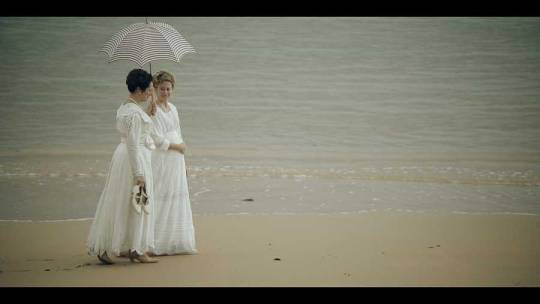
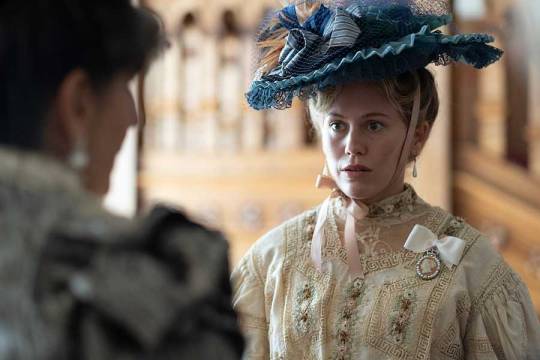


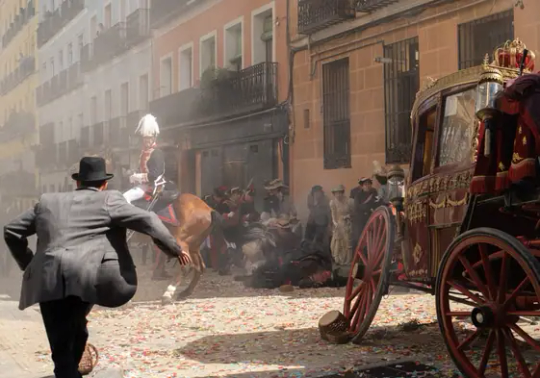



Upcoming series: Ena
In September, the filming of Ena began, a biographical series that will focus on the life of Victoria Eugenie of Battenberg, queen of Spain through her marriage to Alfonso XIII between May 31, 1906 and April 14, 1931, after being the monarchy deposed later by the proclamation of the Second Republic. Great-grandmother of the current king Philip VI of Spain, of whom she was godmother at his baptism. Throughout six chapters, the series will tell the life of Victoria Eugenie and at the same time offer a portrait of a time that changed the world, the first half of the 20th century, from 1905 to 1945. Born on October 24, 1887 in Aberdeenshire, Scotland, Ena was the daughter of Henry of Battenberg and Princess Beatrice, youngest daughter of Queen Victoria of the United Kingdom and Prince Albert of Saxe-Coburg and Gotha. Her godmother was Eugenia de Montijo, empress consort of France as Napoleón III's wife. The name of the series comes from what her friends and family called her since she was little, Ena.
The fiction is based on the novel of the same name by Pilar Eyre. Javier Olivares, who was behind the acclaimed Isabel and El Ministerio del Tiempo, will be the showrunner and plot manager for Ena. In addition to Olivares, the script is written by Isa Sánchez, Daniel Corpas and Pablo Lara Toledo. The series will be directed entirely by women: Anaïs Pareto, director of the series as a whole, in addition to four episodes, and Estel Díaz, who will direct two episodes.
“Ena is the portrait of historical moments that seem distant but are not so far away, because without them we would not understand the times we live in now,” Olivares declares in the press release sent by TVE. The writer and screenwriter remembers that Victoria Eugenie “fought to be happy in a bitter time, in which she witnessed two world wars, a civil war and a great pandemic, the tortuously called Spanish flu.”
For Pilar Eyre, author of the novel, she was "an extraordinary woman: cultured, supportive, liberal-minded, modern and very loyal." And she is excited because "finally all Spaniards can know" the story of a "misunderstood" woman. in their time, which they will always consider foreign." It is a fiction co-produced by RTVE with Ena La Serie AIE, La Cometa TV and Zona App. José Pastor, director of Film and Fiction at RTVE, has pointed out that "it is a "RTVE is proud to be able to portray this interesting historical character, from the point of view of two women directors and with Javier Olivares as showrunner, in one of its best series."
The Spanish actress of Anglo-Danish descent Kimberly Tell will play Ena and Joan Amargós will play Alfonso XIII. For her part, Elvira Mínguez will play Maria Christina von Habsburg-Lothringen, mother of Alfonso XIII. The cast is completed by Lucía Guerrero (Beatrice of Saxe-Coburg and Gotha), Raúl Mérida (Alfonso of Orleans and Bourbon), Juan Gea (Álvaro Figueroa y Torres, Count of Romanones), María Morales (María del Carmen Angoloti y Mesa, Duchess of Victoria), Pedro Mari Sánchez (Rodrigo de Saavedra y Vinent, Marquis of Villalobar), Luisa Gavasa (Eugenia de Montijo) and Joaquín Notario (José de Saavedra y Salamanca, Marquis of Viana)
Mariano Peña will play Miguel Primo de Rivera; Jaume Madaula will play the anarchist Mateo Morral, author of the attack committed at the royal wedding; Tomás del Estal will be Emilio María de Torres y González-Arnáu, and Ángel Ruiz will once again give life to Federico García Lorca, a character he already played in El Ministerio del Tiempo, among others.
The series will be filmed entirely in natural exteriors and interiors, like the Royal Palace of Madrid, the Palace of La Granja de San Ildefonso (Segovia), the Palace of Santoña (Madrid), the Palace of Fernán Núñez (Madrid), the Fort of San Francisco (Guadalajara) and the Magdalena Palace (Santander), built in 1911 by the City Council as a tribute to the monarchs and where Ena spent a good part of her summers in Spain, accompanied by the Royal Family. Filming for the series will continue until the end of December.
~~~~~~~~~~~~~~~~~~~~~~~~~~~~~~~~~~~~~~~~~~
So, the Magdalena Palace is going to be an important location during the series as a summer palace, the main filming location in Gran Hotel, and in that series Ena appeared in the episode 3×13, played by Aída Filx.
Apart from that, are we getting an Olivaresverse (XD)? Most likely not, and it's just references about his previous works as a showrunner, but there are connections between Isabel, Emdt and Ena: Michelle Jenner starring Isabel as Isabella I of Castile, then appearing in a couple of scenes in Emdt episode 1×04 and being an important figure in the lore as the foundress of the ministry (& Eusebio Poncela playing as Cisneros in both series, and also he played Cisneros in the film La Corona Partida and the Carlos Rey Emperador series); Alfonso XIII is a descendant of Isabella I of Castile; Ángel Ruiz appeard as Lorca in Emdt in 4 episodes and now he is on Ena playing as Lorca again, we don't know yet how much screentime he will get or which will his role be (secondary character most likely), but it's great to see more about him!
#Ena#period dramas#upcoming series#ena tve#victoria eugenie of battenberg#maria christina von hasburg#alfonso xiii of spain#kimberley tell#joan amargós#rtve series#pilar eyre#javier olivares#anaïs pareto#estel diaz#federico garcía lorca#ángel ruiz#elvira míngez#maria christina von hasburg-lothringen#lucía guerrero#beatrice of saxe-coburg and gotha#raúl mérida#alfonso of orleans and bourbon#juan gea#álvaro figueroa y torres#maría morales#maría del carmen angoloti y mesa#pedro mari sánchez#rodrigo de saavedra y vinent#luisa gavasa#eugenia de montijo
20 notes
·
View notes
Text
People primarily noted for their long names on Wikipedia:
Leone Sextus Denys Oswolf Fraudatifilius Tollemache-Tollemache de Orellana Plantagenet Tollemache-Tollemache (British Army officer of WWI) and elder brother Lyulph Ydwallo Odin Nestor Egbert Lyonel Toedmag Hugh Erchenwyne Saxon Esa Cromwell Orma Nevill Dysart Plantagenet Tollemache-Tollemache. The last name is pronounced /ˈtuːlmeɪk ˈtɒlmæk/.
Alfonso María Isabel Francisco Eugenio Gabriel Pedro Sebastián Pelayo Fernando Francisco de Paula Pío Miguel Rafael Juan José Joaquín Ana Zacarías Elisabeth Simeón Tereso Pedro Pablo Tadeo Santiago Simón Lucas Juan Mateo Andrés Bartolomé Ambrosio Gerónimo Agustín Bernardo Cándido Gerardo Luis-Gonzaga Filomeno Camilo Cayetano Andrés-Avelino Bruno Joaquín-Picolimini Felipe Luis-Rey-de-Francia Ricardo Esteban-Protomártir Genaro Nicolás Estanislao-de-Koska Lorenzo Vicente Crisóstomo Cristano Darío Ignacio Francisco-Javier Francisco-de-Borja Higona Clemente Esteban-de-Hungría Ladislado Enrique Ildefonso Hermenegildo Carlos-Borromeo Eduardo Francisco-Régis Vicente-Ferrer Pascual Miguel-de-los-Santos Adriano Venancio Valentín Benito José-Oriol Domingo Florencio Alfacio Benére Domingo-de-Silos Ramón Isidro Manuel Antonio Todos-los-Santos de Borbón y Borbón (Spanish nobleman).
Adolph Blaine Charles David Earl Frederick Gerald Hubert Irvin John Kenneth Lloyd Martin Nero Oliver Paul Quincy Randolph Sherman Thomas Uncas Victor William Xerxes Yancy Zeus Wolfeschlegelsteinhausenbergerdorffwelchevoralternwarengewissenhaftschaferswessenschafewarenwohlgepflegeundsorgfaltigkeitbeschutzenvorangreifendurchihrraubgierigfeindewelchevoralternzwolfhunderttausendjahresvorandieerscheinenvonderersteerdemenschderraumschiffgenachtmittungsteinundsiebeniridiumelektrischmotorsgebrauchlichtalsseinursprungvonkraftgestartseinlangefahrthinzwischensternartigraumaufdersuchennachbarschaftdersternwelchegehabtbewohnbarplanetenkreisedrehensichundwohinderneuerassevonverstandigmenschlichkeitkonntefortpflanzenundsicherfreuenanlebenslanglichfreudeundruhemitnichteinfurchtvorangreifenvorandererintelligentgeschopfsvonhinzwischensternartigraum Sr. (German–American typesetter of Philadelphia). His real name was probably just Hubert Blaine Wolfeschlegelsteinhausenbergerdorff.
2 notes
·
View notes
Text

#NoirCity21 opens this Friday, Jan 19, 7:30 PM at Oakland's Grand Lake Theatre with our newest restoration project NEVER OPEN THAT DOOR. Eddie Muller will be signing his books up in the mezzanine, 6pm-7pm. Tix: http://NoirCity.com
Restoration performed by UCLA Film & Television Archive.
Program notes follow.
FRIDAY, JANUARY 19:
7:30
World Premiere FNF Restoration!
NEVER OPEN THAT DOOR | NO ABRAS NUNCA ESA PUERTA
Argentina, 1952. Estudios San Miguel. 85 minutes
Screenplay by Alejandro Casona, from two short stories by Cornell Woolrich (William Irish)
Produced and directed by Carlos Hugo Christensen
More noir films have been based on the stories of Cornell Woolrich than any other writer, and NOIR CITY is proud to present this brand-new restoration of one of the best of those adaptations. In “Someone’s on the Phone,” Ángel Magaña plays a man bent on avenging the death of his sister, driven to suicide by gambling debts. In “The Hummingbird Comes Home,” Roberto Escalada portrays a racketeer who brings the gang to his boyhood home to lay low after a robbery. His blind madre doesn’t approve. Originally a three-part anthology of Woolrich tales, Never Open That Door was released separately from the 73-minute If I Should Die Before I Wake, also adapted by Casona and Christensen. Benefitting from the incredible cinematography of Pablo Tabernero, this is one of the most evocative realizations of Woolrich ever produced, featuring masterful sequences of sustained suspense. Said Buenos Aires film critic Horacio Bernades, “Rarely has an Argentine film been more purely cinematic than this.”
CAST: Someone on the Phone: Ángel Magaña (Raúl), Renée Dumas (Luisa), Diana de Córdoba (Nelly), Nicolás Fregues (money lender), Pedro Fiorito, Orestes Soriani, Percival Murray, Rosa Martín , Arnoldo Chamot. The Hummingbird Comes Home: Roberto Escalada (Daniel), Ilde Pirovano (the mother), Norma Giménez (María), Luis Otero (Juan)
9:30
STREET OF CHANCE
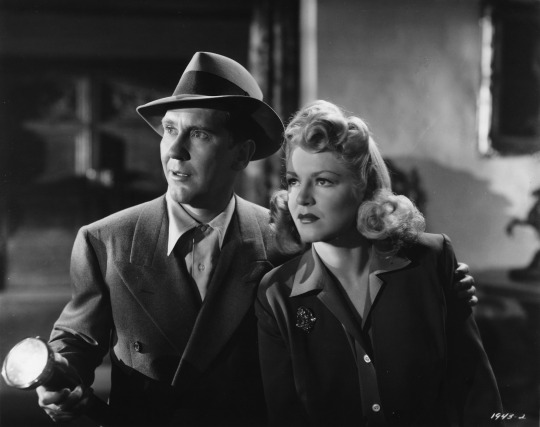
United States, 1942. Paramount [Universal]. 74 minutes
Screenplay by Garrett Fort, based on the novel The Black Curtain by Cornell Woolrich
Produced by Burt Kelly. Directed by Jack Hively
The first case of amnesia in the film noir era comes with a typically intriguing Woolrichian twist. Frank Thompson survives a near fatal accident only to have the shock partially restore his memory! He realizes he’s lived the past several years as someone other than his true self. With the help of his incredulous girlfriend Ruth, Frank embarks on a nocturnal quest to determine his true identity. This modest offering from the B-unit at Paramount benefits from some A-list contributors, principally stars Burgess Meredith and Claire Trevor, and director of photography Theodor Sparkuhl, whose contributions to the look of early ’40s noir have gone largely unheralded. A wonderful gallery of supporting characters skitter and sneak through Frank’s waking nightmare, well rendered by journeyman director Jack Hively who had previously helmed many entries in RKO’s mystery series The Saint.
CAST: Burgess Meredith (Frank Thompson), Claire Trevor (Ruth Dillon), Louise Platt (Virginia Thompson), Sheldon Leonard (Joe Marucci), Frieda Inescort (Alma Diedrich), Jerome Cowan (Bill Diedrich), Adeline deWalt Reynolds (Grandma Diedrich), Arthur Loft (Sheriff Stebbins), Clancy Cooper (Burke), Ann Doran (Miss Peabody), Paul Phillips
#film noir#eddie muller#noir city#noir city 21#film noir festival#film restoration#don't open that door#street of chance#cornell woolrich
6 notes
·
View notes
Text





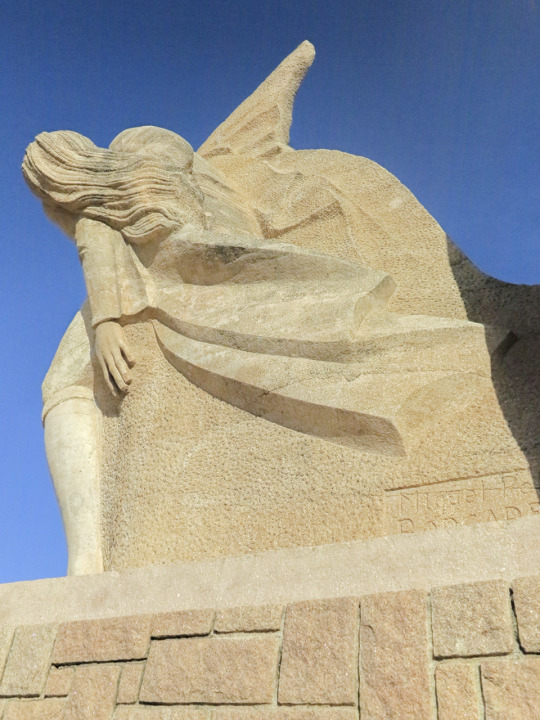


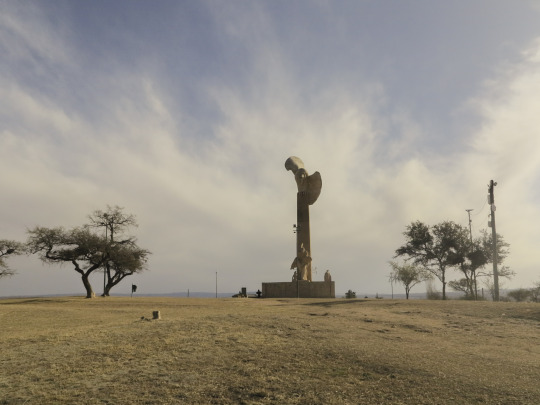
🦅A un costado de la ruta 38, cerca de Villa Carlos Paz, puede verse a lo lejos un cóndor de cemento entre el paisaje serrano de la comuna de Estancia Vieja. Es el imponente Monumento al Indio Bamba, que recuerda una tradicional leyenda cordobesa.
Erigido en 1951 por el artista santafesino Miguel Pablo Borgarello, este grupo escultórico está inspirado en un extenso poema de Ataliva Herrera de 1933. La iniciativa de su construcción provino de José Muñoz como una estrategia para promover un loteo en sus tierras.
🗿El conjunto escultórico narra la tragedia de Bamba y su relación con María Magdalena. Está formado por un obelisco en cuyo remate se destaca un cóndor a 17 metros de altura. Más abajo encontramos a un robusto Bamba y a María Magdalena desvanecida en sus brazos. En la base se ubican los motivos alegóricos relacionados al poema con citas de algunos versos. Detrás se encuentra nuevamente ella, sus cuatro hijos y el perro Jazmín, acompañados por dos figuras un poco distanciadas: la Bruja de la Salamanca y la que probablemente sea la Reina del Agua. Un arco con relieves no llegó a construirse ya que el camión que los transportaba volcó y se destruyeron.
📖La leyenda se remonta a la Córdoba colonial, donde Bamba, esclavo adoptado por Don Juan de Allende, se enamora de su prima María Magdalena sin saber del parentesco. Después de tragedias y la fuga a las sierras, regresa por ella, viviendo juntos durante 20 años y teniendo cuatro hijos. No obstante, las muertes marcarán el resto de la historia.
🎵Este monumento y su predio, que ocupan 209 metros cuadrados, son escenario hace más de diez veranos del Festival del Indio Bamba, convirtiéndolo en un testimonio cultural vivo que nos conecta con la historia y los paisajes de Córdoba.
📕Fuentes:
Bischoff, E. U. (2004). "Bamba, leyenda y realidad". Editorial Brujas.
Negruzzi, G. A. (2018). "Violencia y construcción de otredad en torno a una leyenda del centro y norte de Córdoba".
https://revistas.unc.edu.ar/index.php/etcetera/article/view/22571
5 notes
·
View notes
Text
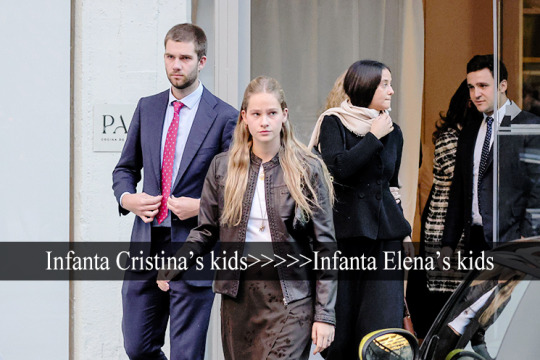
“Infanta Cristina’s kids>>>>>Infanta Elena’s kids” - Submitted by Anonymous
#Pablo Urdangarin#juan urdangarin#Irene Urdangarin#Miguel Urdangarin#felipe de marichalar y borbon#victoria de marichalar y borbon
15 notes
·
View notes
Text
Generation of 27
The Generation of '27 (Spanish: Generación del 27) was an influential group of poets that arose in Spanish literary circles between 1923 and 1927, essentially out of a shared desire to experience and work with avant-garde forms of art and poetry. Their first formal meeting took place in Seville in 1927 to mark the 300th anniversary of the death of the baroque poet Luis de Góngora. Writers and intellectuals paid homage at the Ateneo de Sevilla, which retrospectively became the foundational act of the movement.
Terminology:
The Generation of '27 has also been called, with lesser success, "Generation of the Dictatorship", "Generation of the Republic", "Generation Guillén-Lorca" (Guillén being its oldest author and Lorca its youngest), "Generation of 1925" (average publishing date of the first book of each author), "Generation of Avant-Gardes", "Generation of Friendship", etc. According to Petersen, "generation group" or a "constellation" are better terms which are not so much historically restricted as "generation".
Aesthetic style:
The Generation of '27 cannot be neatly categorized stylistically because of the wide variety of genres and styles cultivated by its members. Some members, such as Jorge Guillén, wrote in a style that has been loosely called jubilant and joyous and celebrated the instant, others, such as Rafael Alberti, underwent a poetic evolution that led him from youthful poetry of a more romantic vein to later politically-engaged verses.
The group tried to bridge the gap between Spanish popular culture and folklore, classical literary tradition and European avant-gardes. It evolved from pure poetry, which emphasized music in poetry, in the vein of Baudelaire, to Futurism, Cubism, Ultraistand Creationism, to become influenced by Surrealism and finally to disperse in interior and exterior exile following the Civil Warand World War II, which are sometimes gathered by historians under the term of the "European Civil War". The Generation of '27 made a frequent use of visionary images, free verses and the so-called impure poetry, supported by Pablo Neruda.
Members:
In a restrictive sense, the Generation of '27 refers to ten authors, Jorge Guillén, Pedro Salinas, Rafael Alberti, Federico García Lorca, Dámaso Alonso, Gerardo Diego, Luis Cernuda, Vicente Aleixandre, Manuel Altolaguirre and Emilio Prados. However, many others were in their orbit, some older authors such as Fernando Villalón, José Moreno Villa or León Felipe, and other younger authors such as Miguel Hernández. Others have been forgotten by the critics, such as Juan Larrea, Pepe Alameda, Mauricio Bacarisse, Juan José Domenchina, José María Hinojosa, José Bergamín or Juan Gil-Albert. There is also the "Other generation of '27", a term coined by José López Rubio, formed by himself and humorist disciples of Ramón Gómez de la Serna, including: Enrique Jardiel Poncela, Edgar Neville, Miguel Mihura and Antonio de Lara, "Tono", writers who would integrate after the Civil War (1936–39) the editing board of La Codorniz.
Furthermore, the Generation of '27, as clearly reflected in the literary press of the period, was not exclusively restricted to poets, including artists such as Luis Buñuel, the caricaturist K-Hito, the surrealist painters Salvador Dalí and Óscar Domínguez, the painter and sculptor Maruja Mallo, as well as Benjamín Palencia, Gregorio Prieto, Manuel Ángeles Ortiz and Gabriel García Maroto, the toreros Ignacio Sánchez Mejías and Jesús Bal y Gay, musicologists and composers belonging to the Group of Eight, including Bal y Gay, Ernesto Halffter and his brother Rodolfo Halffter, Juan José Mantecón, Julián Bautista, Fernando Remacha, Rosa García Ascot, Salvador Bacarisse and Gustavo Pittaluga. There was also the Catalan Group who presented themselves in 1931 under the name of Grupo de Artistas Catalanes Independientes, including Roberto Gerhard, Baltasar Samper, Manuel Blancafort, Ricard Lamote de Grignon, Eduardo Toldrá and Federico Mompou.
Finally, not all literary works were written in Spanish: Salvador Dalí and Óscar Domínguez also wrote in French. Foreigners such as the Chilean poets Pablo Neruda and Vicente Huidobro, the Argentine writer Jorge Luis Borges, and the Franco-Spanish painter Francis Picabia also shared much with the aesthetics of the Generation of '27.
The Generation of '27 was not exclusively located in Madrid, but rather deployed itself in a geographical constellation which maintained links together. The most important nuclei were in Sevilla, around the Mediodía review, Tenerife around the Gaceta de Arte, and Málaga around the Litoral review. Others members resided in Galicia, Catalonia and Valladolid.
The Tendencies of '27:
The name "Generation of 1927" identifies poets that emerged around 1927, the 300th anniversary of the death of the Baroque poet Luis de Góngora y Argote to whom the poets paid homage. It sparked a brief flash of neo-Gongorism by outstanding poets like Rafael Alberti, Vicente Aleixandre, Dámaso Alonso, Luis Cernuda, Gerardo Diego and Federico García Lorca.
Spanish Civil War aftermath:
The Spanish Civil War ended the movement: García Lorca was murdered, Miguel Hernandez died in jail and other writers (Rafael Alberti, Jose Bergamin, León Felipe, Luis Cernuda, Pedro Salinas, Juan Ramón Jiménez, Bacarisse) were forced into exile, although virtually all kept writing and publishing late throughout the 20th century.
Dámaso Alonso and Gerardo Diego were among those who reluctantly remained in Spain after the Francoists won and more or less reached agreements with the new authoritarian and traditionalist regime or even openly supported it, in the case of Diego. They evolved a lot, combining tradition and avant-garde, and mixing many different themes, from toreo to music to religious and existentialist disquiets, landscapes, etc. Others, such as Vicente Aleixandre and Juan Gil-Albert, simply ignored the new regime, taking the path of interior exile and guiding a new generation of poets.
However, for many Spaniards the harsh reality of Francoist Spain and its reactionary nature meant that the cerebral and aesthetic verses of the Generation of '27 did not connect with what was truly happening, a task that was handled more capably by the poets of the Generation of '50 and the social poets.
Statue:
A statue dedicated to the Generation 27 Poets is now in Seville in Spain. The inscription on the monument translates as 'Seville The poets of the Generation of 27'
List of members[edit]
Rafael Alberti (1902–1999)
Vicente Aleixandre (1898–1984)
Amado Alonso (1897–1952)
Dámaso Alonso (1898–1990)
Manuel Altolaguirre (1905–1959)
Francisco Ayala (1906–2009)
Mauricio Bacarisse (1895–1931)
José Bello (1904–2008)
Rogelio Buendía (1891–1969)
Alejandro Casona (1903–1965)
Juan Cazador (1899–1956)
Luis Cernuda (1902–1963)
Juan Chabás (1900–1954)
Ernestina de Champourcín (1905–1999)
Gerardo Diego (1896–1987)
Juan José Domenchina (1898–1959)
Antonio Espina (1894–1972)
Agustín Espinosa (1897–1939)
León Felipe (1884–1968)
Agustín de Foxá (1903–1959)
Pedro García Cabrera (1905–1981)
Federico García Lorca (1898–1936)
Pedro Garfias (1901–1967)
Juan Gil-Albert (1904–1994)
Ernesto Giménez Caballero (1899–1988)
Jorge Guillén (1893–1984)
Emeterio Gutiérrez Albelo (1905–1937)
Miguel Hernández (1910–1942)
José María Hinojosa (1904–1936)
Enrique Jardiel Poncela (1901–1952)
Rafael Laffón (1895–1978)
Antonio de Lara (1896–1978)
Juan Larrea (1895–1980)
José López Rubio (1903–1996)
José María Luelmo (1904–1991)
Francisco Madrid (1900–1952)
Paulino Masip (1899–1963)
Concha Méndez (1898–1986)
Miguel Mihura (1905–1977)
Edgar Neville (1899–1967)
Antonio Oliver (1903–1968)
Pedro Pérez-Clotet (1902–1966)
Rafael Porlán (1899–1945)
Emilio Prados (1899–1962)
Joaquín Romero Murube (1904–1969)
Pedro Salinas (1891–1951)
Guillermo de Torre (1900–1971)
José María Souvirón (1904–1973)
Miguel Valdivieso (1897–1966)
Fernando Villalón (1881–1930)
13 notes
·
View notes
Text
📚 My 2024 Readings 📚
Hello again! I hope that, between the more lewd content you can find on my blog, you can also enjoy some book reviews. This year, I plan to diversify my readings list and pick some more culturally significant books from time to time.
January
Alberti, Rafael. Poemas Esenciales (Selección). Editorial Salvat, 2022.
Storni, Alfonsina. Antología Poética (1968) Selección por Alfredo Veirave. Biblioteca Argentina Fundamental. Centro Editor de América Latina.
Gaiman, Neil (1996) Neverwhere. Roca Editorial de Libros, Barcelona.
Christie, Agatha (1950) Tres Ratones Ciegos. Selección Biblioteca de Oro, Editorial Molino. Barcelona, España.
February
Dinesen, Isak (1937) Memorias de África. Narrativa Actual. RBA Editorial.
Bécquer, Gustavo Adolfo. Poemas Esenciales (Selección) Editorial Salvat. 2022
Philip K. Dick (1987) The Collected Stories, Volume IV.
March
Darío, Ruben. Azul... Cuentos, y Poemas en Prosa. Colección Criol Literario. Editorial Aguilar. Séptima Edición, 1969.
Doyle, Sir Arthur Conan (1887) Estudio en Escarlata. Editorial Salvat. Barcelona, España. 2022
April
Doyle, Sir Arthur Conan (1890) El Signo de los Cuatro. Editorial Salvat. Barcelona, España. 2022
Doyle, Sir Arthur Conan (1915) El Valle del Terror. Editorial Salvat. Barcelona, España. 2022
Darío, Rubén. Poemas Esenciales (Selección) Editorial Salvat. 2022
Christie, Agatha (1937) Muerte en el Nilo. Editorial Planeta de Agostini. Barcelona, España. 2022.
Mayo
Hernández, Miguel. Poemas Esenciales (Selección) Editorial Salvat. 2022
Quiroga, Horacio. La Gallina Degollada y otros cuentos. Biblioteca Fundamental Argentina. Editorial ... 19...
Junio
Cortázar, Julio. El Perseguidor y otros cuentos. Biblioteca Fundamental Argentina. Editorial... 19...
Echeverría, Esteban. La Cautiva, El Matadero y otros escritos. Biblioteca Fundamental Argentina. Editorial ... 19...
Christie, Agatha. Y no quedó ninguno (1939). Editorial Planeta de Agostini. Barcelona, España. 2022.
Julio
Jiménez, Juan Ramón. Poemas Esenciales (Selección) Editorial Salvat. 2022
Leroux, Gastón. El Misterio del Cuarto Amarillo (1907). Editorial Salvat. Barcelona, España. 2022.
Lorca, Federíco García. Poemas Esenciales (Selección). Editorial Salvat. 2022
Christie, Agatha (1934) Asesinato en el Expreso Oriental. Editorial Planeta de Agostini. Barcelona, España. 2022
Chesterton, Gilbert Keith (1910) El Candor del Padre Brown. Editorial Salvat. Barcelona, España. 2022
Martí, José. Poemas Esenciales (Selección). Editorial Salvat. 2022
Agosto
Varios autores. Los Poetas de Florida. Selección por Guillermo Ara. Biblioteca Fundamental Argentina. Centro Editor de América Latina. 1968
Varios autores. Los Escritores de Boedo. Selección por Carlos R. Giordano. Biblioteca Fundamental Argentina. Centro Editor de América Latina. 1968
Austen, Jane (1813) Orgullo y Prejuicio. Traducción de Alejandro Pareja Rodríguez. RBA Editorial. España, 2022
Milne, Alan Alexander (1924) When We Were Very Young
Mistral, Gabierla. Poemas Esenciales (Selección). Editorial Salvat. 2002
Septiembre
Christie, Agatha (1926) El Asesinato de Roger Ackroyd. Editorial Planeta de Agostini. Barcelona, España. 2022
Neruda, Pablo. Poemas Esenciales (Selección). Editorial Salvat. 2022
Poe, Edgar Allan (1841) Los Asesinatos de la Rue Morgue y otros cuentos. Editorial Salvat. Barcelona, España. 2022
Nervo, Amado. Poemas Esenciales (Selección). Editorial Salvat. 2022
#literature#2024 readings#my 2024 readings#my readings#books#rafael alberti#salvat#poetry#poems#alfonsina storni#neil gaiman#agatha christie#isak dinesen#gustavo adolfo becquer
4 notes
·
View notes
Link
#netflix#hbo#magistv#paramount#primevideo#telelatino#disneyplus#mcm#acmachine#starplus#cinema#plex#vix#playstation#series
2 notes
·
View notes
Text
Buscarán el tesoro más grande que nadie vio jamás… “Bandidos”

Después de descubrir un mapa antiguo, Miguel, Lilí, Wilson y otros bandidos comienzan una aventura en el Caribe mexicano llena de peligros para intentar descubrir un tesoro que ha estado perdido durante muchos años. ¿Podrán lograrlo con un plan improvisado, un poco de buena suerte y sabiendo que no son los únicos detrás de este tesoro?.
Estreno: 13 de marzo de 2024 en Netflix.
youtube
La serie cuenta con las actuaciones de Ester Expósito, Alfonso Dosal, Juan Pablo Medina, Andrés Baida, Andrea Chaparro, Mabel Cadena, Nicolás Furtado, Juan Pablo Fuentes, Bruno Bichir, entre otros.

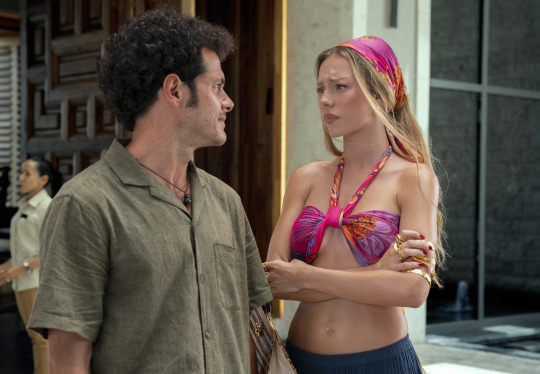



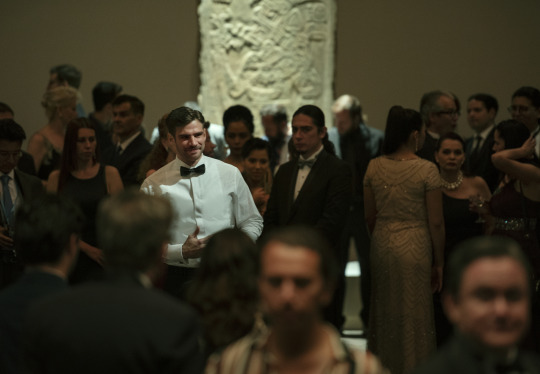
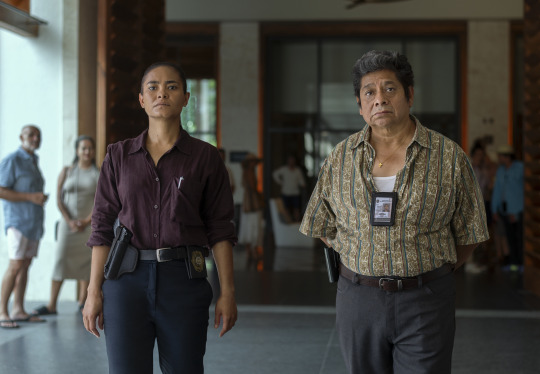



Detrás De Cámaras

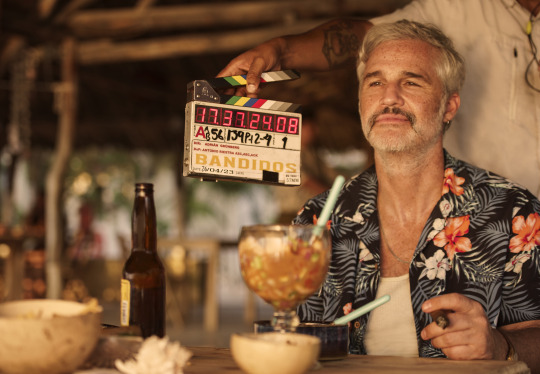


Sesión Fotográfica




Los protagonistas asistieron a la premiere de la serie en la Ciudad de México


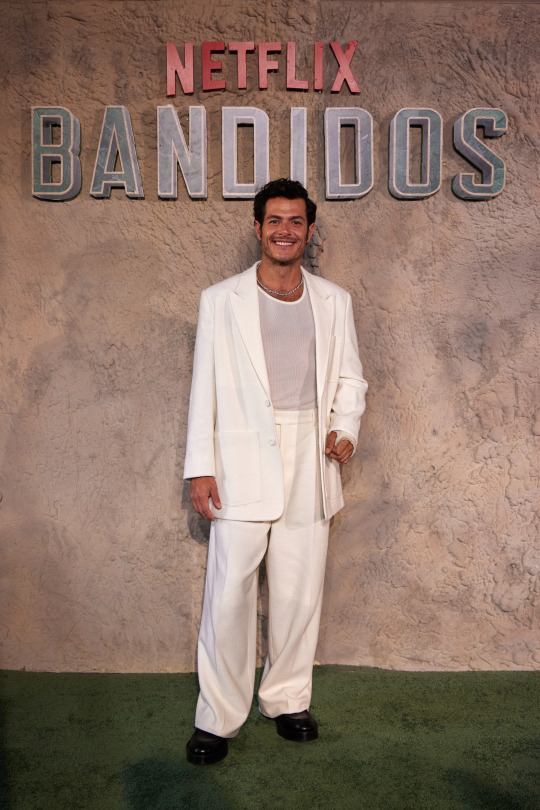

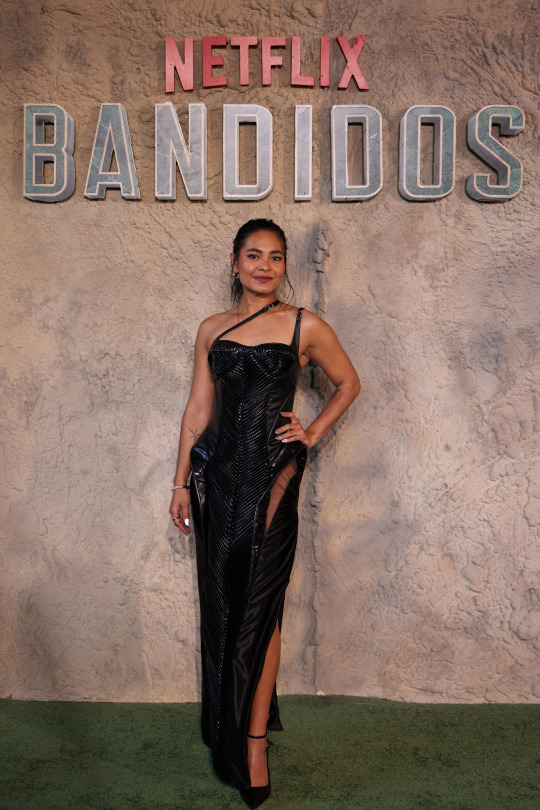




#Bandidos#Ester Expósito#Alfonso Dosal#Juan Pablo Medina#Andrés Baida#Andrea Chaparro#Mabel Cadena#Nicolás Furtado#Juan Pablo Fuentes#Bruno Bichir#Series#Netflix
2 notes
·
View notes